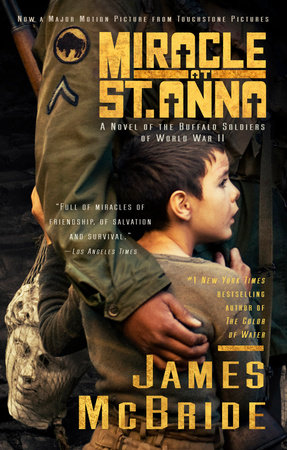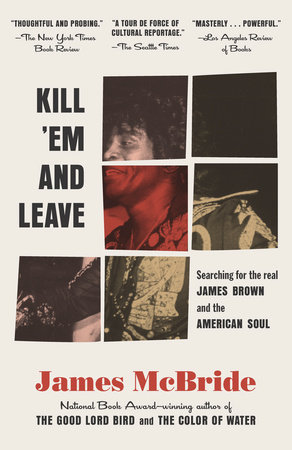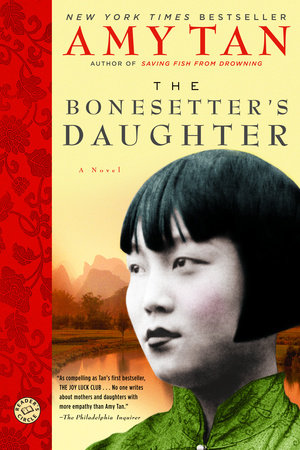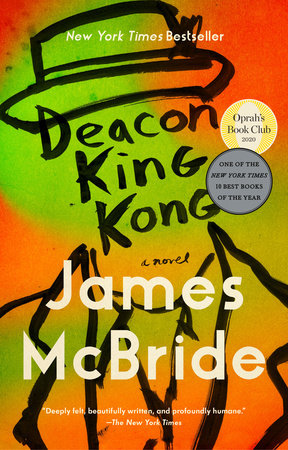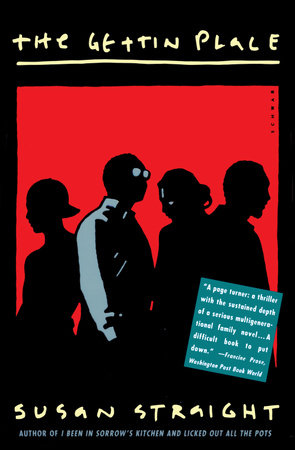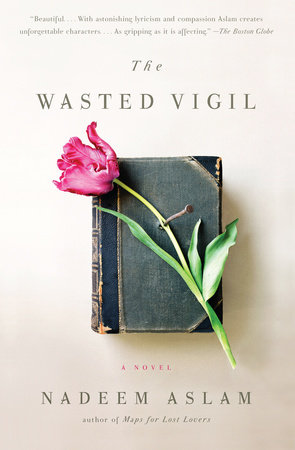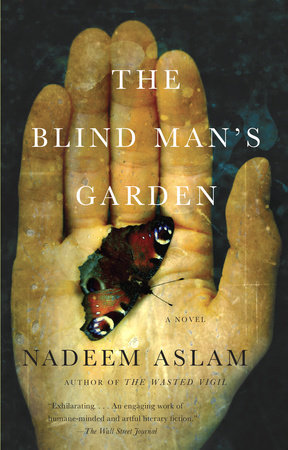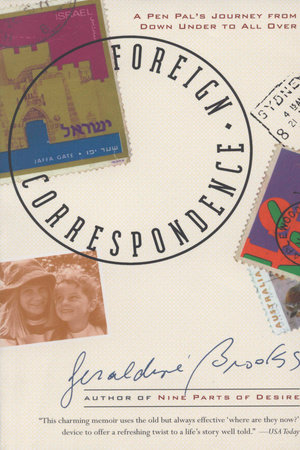A Conversation with James McBride
Author of
Miracle at St. Anna
Q: How do you describe this story?
A: Miracle at St. Anna is the story of a Negro soldier in Italy during World War II—a member of the 92nd Infantry (Buffalo) Division—who befriends a young Italian kid he finds on a battlefield. As a result of their meeting he ends up in a small village in the mountains of Tuscany with three other men from his squad. There they encounter a miracle. Like my first book, what it’s really about is the commonality of the human experience. The Color of Water explored that commonality through the real-life story of my mother and my siblings and how we came to fruition as successful adults through her persistence and faith in God. Miracle at St. Anna explores the same subject through the journey of two human beings who, on the face of things, have nothing in common: an illiterate black soldier from the American south—a colossus of a man—and a six-year-old Italian boy who has lost his memory after witnessing a horrible atrocity. In fact they are both innocents. And they are both victims.
Q: Do you classify this as a “war story?”
A: I do not. The war simply serves as a backdrop for the human drama that takes place in the relationships among these four Negro soldiers, the six-year-old boy, a group of Italian partisans, and the Italian villagers. Italy was a fascinating place during that time. The Italians suffered terribly during the war. The ramifications of those years still reverberate throughout the country today.
Q: One of the heroic characters in Miracle at St. Anna is a German soldier. How did this part of the story evolve?
A: The book was inspired by a true event that happened in the area where the 92nd Division fought—specifically, a village called St. Anna di Stazzema. St. Anna was the site of a massacre of more than 500 Italian civilians by members of a German SS unit. What I discovered, in researching that incident, was that there were several German soldiers found among the Italian dead, apparently shot by their own comrades when they refused to participate in the mass killing. That hit me very hard. Given what the German army was, and what the SS was, and given the level of cultural indoctrination that existed in Germany at the time, it had to have taken an enormous amount of courage for these men to discard their entire history as soldiers and Germans and face death rather than participate in an atrocity. These real-life events underscored one of the key themes of this story. Namely that in war we’re all victims—soldiers and civilians alike—regardless of nationality.
Q: In what way did you draw inspiration for this story from your childhood?
A: Several of my family members were veterans of WWII including my uncle Henry, who fought in Italy and France, and my cousin, Herbert Hinson, who also served in the 92nd. When I was a kid I used to hear them, and other family friends who were veterans, swap war stories. Uncle Henry would talk about the Italians and the French and how much they loved the American soldiers. He used to say we were kings over there. I don’t remember much of what they spoke about because as kids we’d just tune it out. And of course I never saw anything about black soldiers in the war mythology of television and film that I worshiped as a kid. Nevertheless the subject still interested me when I became a professional storyteller.
Q: Did discovering your Jewish background add to your interest in the subject?
A: In coming to terms with my own “being” as a person of Jewish heritage I found myself much more sensitized to the events of World War II then ever before. I also learned that my mother had two or three cousins who died in the holocaust. My initial aim was to write a novel about a group of black soldiers who liberate a concentration camp in Eastern Europe. I read lots of books and spent a lot of time researching the subject but soon came to the realization that I’m not qualified to write about the holocaust. It’s too much. It’s too great. Even if you were to bite off the smallest bit of it, the poison within is so mighty that you can’t absorb it because it’s simply not absorbable. That’s when I began to come to grips with the fact that I was trying to write much more than a war story—I was trying to write about pain and suffering and liberation. In other words I was seeking to write about the commonality of the human experience that existed in Europe at that time. That’s when I thought back to the war stories I had heard as a kid about the 92nd Division.
Q: How did you research this book?
A: I started the research process in 1996 right after The Color of Water was published. I just sucked up whatever information I could find. I was like a sponge. I read roughly 25 books about the war in Italy. I interviewed dozens of 92nd Division vets from all across the country. I even traveled to Italy with some of them when they went back for a reunion. I studied Italian at the New School in Manhattan and then spent about eight months in Italy, including a five-month stint with my entire family. While there I interviewed just about anyone I could find including civilians who had survived the war, survivors of massacres, former soldiers, fascists, and partisans including the sons and daughters of men and women who had died during the war and wanted to tell their parents’ stories. Of all the people I interviewed they were the most interesting.
Q: Why were they the most interesting?
A: Because they were just children at the time. Basically they took up arms against the Germans because they could no longer stand to see their parents suffer and their fellow villagers starve. They were not the equivalent of the hip people in Soho who wear black and cry crocodile tears on Martin Luther King’s birthday. They had everything to lose and nothing to gain except their freedom, which is not a small thing. They basically fought the German army with toothpicks and a resolve of spirit that’s almost impossible to imagine. They hiked into the mountains where they lived in caves or outdoors for days and weeks at a time while trying to sabotage the German forces that had invaded their country. It’s easy now to say “I would have joined up too,” but anyone who’s seen those mountains in Italy at night, like I have, would think twice about leaving the comforts of home, however much of a shambles that home may have been, to go out and fight an enemy who had repeatedly demonstrated a willingness to kill you and your entire family should you resist.
Q: How has history treated the African American soldier of World War II? And what’s the biggest misconception people have about black servicemen from that era?
A: The biggest misconception is the they weren’t as patriotic as whites and that they didn’t serve in any great number. Clearly that’s not the case. The 92nd Division alone was made up of roughly fifteen thousand men. Many people also think that blacks only served as cooks, quartermasters, truck drivers, orderlies and the like. Anyone who thinks that should read about soldiers like John Fox, who was posthumously awarded the Distinguished Service Cross for calling down artillery fire on his own position to stop an enemy advance, or Vernon Baker, who was awarded the Congressional Medal of Honor. Both men served in Italy with the 92nd.
I think history has done a disservice to African American GI’s in failing to fully recognize not only that they fought as soldiers but that their humanity and love of this country was, in some respects, greater than that of their white counterparts. You have to remember America at that time was treating German POWs held in the U.S. better than it was treating black Americans—in or out of uniform. Blacks willingly went overseas to fight for their country but when the war was over they came home to ingratitude, unemployment, racial violence, and continued treatment as second-class citizens—not to mention the possibility of being lynched for tipping their caps and winking at white women. Their former foes, on the other hand, were allowed to come into this country, get good jobs, and buy homes in areas where they were not allowed to settle. In short, they fought for a country that treated “the enemy” better than they were treated. In my opinion that’s patriotism of the highest order. These men were smart enough to realize that some day their patriotism would be justified and that they’d win their place in history. I have the greatest respect for anyone who fought in World War II but I hope this book—despite being a novel—helps advance that cause. I think we need to add to the myth of the black GI so that people will see beyond what they normally see when they read books or watch programs about World War II.
Q: How did the Italians treat the black soldiers?
A: If you had a cup of coffee to share you could be president of Italy. And the Italians hadn’t learned our particular brand of racism. They treated the Negro soldiers as men, with respect. They dropped flowers on the blacks as they marched by and mourned them when they died. The Negro soldiers charmed them. The Italians thought they were exotic. And similarly, the black soldiers of the 92nd loved the Italians because the Italians didn’t care about race. They treated them as human beings. That’s part of what the book deals with as it explores the bond that develops between this soldier and the young Italian boy. Initially the soldier rejects the kid because he’s white—from a different “tribe.” Then he begins to see him as a human being just like himself. In coming to see the humanity in this child, he and his squad-mates rediscover their own humanity.
Q: You’ve also said the Italians were seeing a different kind of black man back then. What do you mean by that?
A: My father and stepfather were from that generation. They were solid working-class guys who could just take it and remain lighthearted. Under the most difficult circumstances they worried about the right things. They tried to do right. They didn’t make excuses. And they were raised in an environment where no excuses were tolerated. They were raised in an environment where you didn’t say “I beat someone up because I didn’t get Twinkies when I was ten years old.” It’s perhaps a dangerous thing to say but I believe they were a different kind of black man—the kind that doesn’t exist today. I’m not one either. They knew what was important and they were rooted in the earth. It was not just a question of values or principles—the moral bar was not as low as it is now among black men. The soldiers that the Italians met were some of the finest representatives of black American culture.
Q: Are you concerned that the story of race here will overshadow the wider human story?
A: One of the challenges here will be getting people to see that this is not really about black soldiers but about human beings and how they relate to one another while trapped within the confines of human suffering. I hope I’ve made this story interesting enough for people to want to read it regardless of whether the issue of race is in it or not.
Q: How is the challenge of writing fiction different from that of non-fiction for you?
A: With non-fiction you’re dealing with a set of facts and events that are intractable. You have to describe them in a way that makes people want to read to the end but the events are basically in place. With fiction you create a set of characters that eventually come to life and start reacting and doing things you haven’t necessarily planned. You have to be enough of a craftsman to then follow the characters and create the connective tissue that holds your story, your plots, and your characters together. Contrary to what you might think, this makes fiction a lot more restrictive for writers than non-fiction. For example, you can’t just kill off a character. I hear writers talk about killing off characters all the time but it doesn’t really work that way because they take on a life of their own. I created the character Ludovico Salducchi simply as a means of getting my four main characters into the village so they could meet the partisans and become embroiled in the mystery of what’s in the young Italian boy’s mind. Once he was created, however, he began to develop and move in his own direction. He led me to Ettora, the woman he loved. In a sense you, as the writer, become a spectator to the story, the history, that’s being created by the characters. As you stay true to them the story moves in unexpected directions and you just go along for the ride.
Q: Your first book was a phenomenal worldwide success. It sold millions of copies in numerous languages, won awards, and earned you great accolades. What sort of pressures did you feel as a result of that success?
A: The immediate pressure was to do another Color of Water—Color of Water Part II—and I just didn’t want to do that. I’d already mined my own history. I’m not one of those writers who can write a four-volume autobiography. What’s the point? What am I showing people? I’m just not that interesting. Considering my background I guess I could have come up with a sure-fire hit if I had written “Blacks and Jews in America” or ” Blacks and Whites in America” but that’s been done before and I have nothing more to say on the subject. There are others who are much more qualified than I to write that kind of book. While Miracle at St. Anna touches on the issues of race that faced these black soldiers, it’s a much bigger story than that. It also touches on Mussolini and the conflict between the Italian fascists and the partisans; the history and mythology of the region; Italy’s role as a doormat for the world’s armies; the way the past continues to impact the present; the confusion of war; and much more. I didn’t write this book to prove anything to anyone but I hope it shows that I can write about wider subjects.
Q: What exactly is the miracle you’re referring to in the book’s title?
A: There are several miracles in this story. The main miracle is that this young Italian boy comes back to life. His transformation, his finding himself, after witnessing a horrible atrocity, is a miracle. The way he and the four soldiers connect is something of a miracle. The way Bishop gives the boy life is also a miracle. Bishop is like a little devil. He hates white people. He’s a womanizer, a liar, and a phony preacher. In the last moments of his own life—as he breathes new life into the boy (another miracle)—he realizes everything he’s done wrong and why he’s done it and that there is a God. That’s a miracle too. And of course the story takes place in a predominantly Catholic country where people believe in miracles as a matter of everyday life.
Q: What do you want readers to get out of this book?
A: I hope they’ll come away from this book with a deeper understanding that we’re all a lot more the same than we are different; that our humanity intractably binds us, and that there’s no getting out of it. If the grandchildren of slaves can go to Italy and bond and love the descendants of peasants, kings and court jesters, anything is possible.
